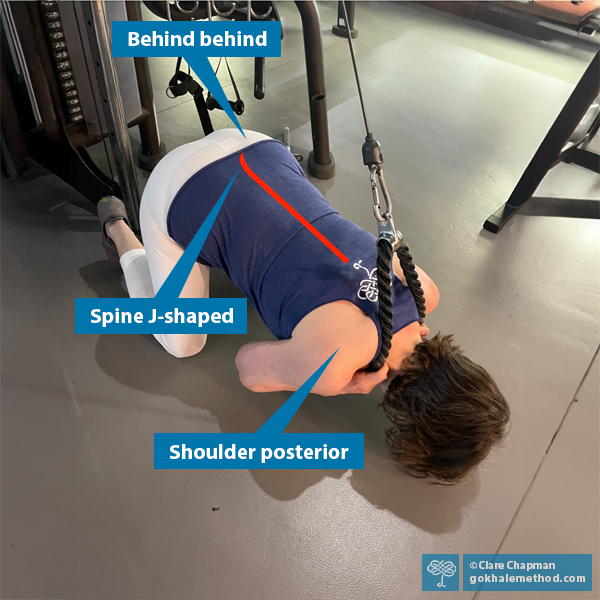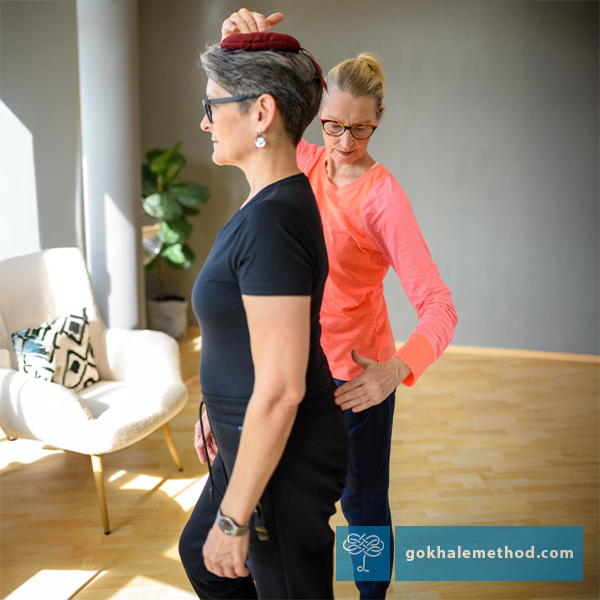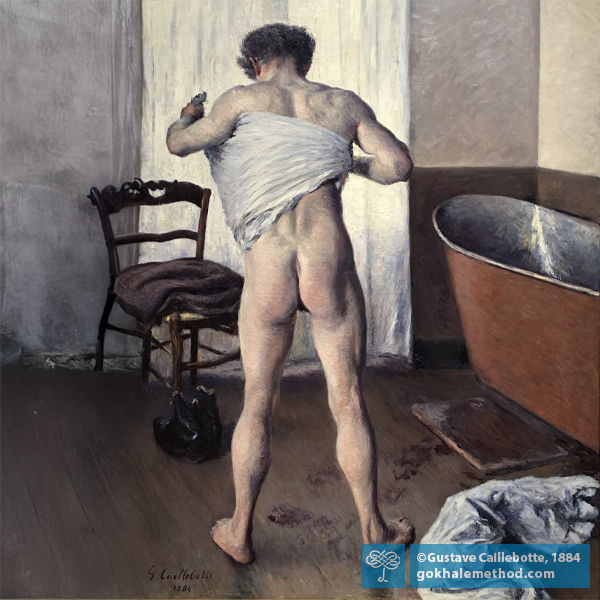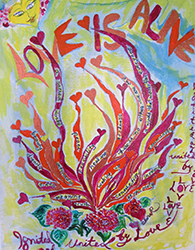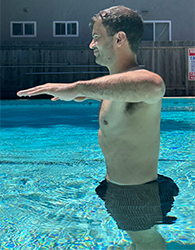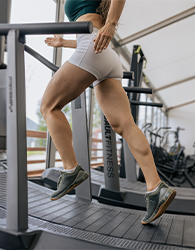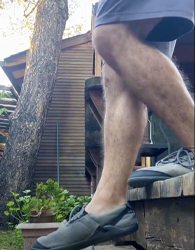People often come to the Gokhale Method® when they suddenly can’t enjoy what they love to do. Their days playing golf, sailing, dancing, hiking, or simply playing with their children or grandchildren, are threatened. Life becomes an obstacle course of injuries, pain, and rehab. Their body is no longer a comfortable home where they feel good and self-confident.
Why Healthy Glutes Reduce Aches and Pains
Over the decades that our students have gotten out of pain by learning the Gokhale Method®, it has become clear that healthy glutes are essential in this. Well-functioning glutes hold the key to unlocking many poor postural habits, and contribute to better biomechanics and movement. Good glute function will often solve pain and enable healing in apparently unconnected areas of the body. Let’s take a look at some of the common, and sometimes surprising, aches and pains that respond to our glute training…
From Back Fracture and Knee Surgery, to Rafting and Hiking
Rob Buirgy reached out having sustained a multiple fragment compression fracture of his T12 vertebra (in the middle of the back). Despite being in a body brace afterwards, having already followed the Gokhale Method for a couple of years, Rob’s instinct told him that our method would be able to help him regain an active life. More recently, he has also fully recovered from a whole knee replacement. In this blog post he explains how healthy posture set him up for success…
—Esther Gokhale
This Valentine’s Day, Walk with Your Heart…
Some years ago I had a student who had difficulty engaging his glutes and leaving his back heel down while walking. I had guided him through my usual toolbox of techniques and principles, but this piece still stubbornly failed to land. All of a sudden something dawned on him, and he exclaimed, “Oh, it’s a jaunty walk!” and proceeded to do exactly what I had been trying to teach him with an additional spring in his step.
Wake Up Your Glutes, They Snooze, You Lose
In surveys of what people find physically attractive in a partner, a shapely butt is often highly rated. Perhaps it’s no surprise, but if you want, there are even apps to help! So, are good-looking glutes all about sex appeal and filling out our clothing in a flattering fashion? While these concerns may be valid, it is also true that well-toned glutes have many other, profound, but less widely recognized attributes.
This blog post takes a look at the bigger picture of glute function. You may be surprised to find out just how much your glutes can contribute to healthy posture and a pain-free body.
Clare’s Gokhale Method® Success Story
In January and February this year I took the Gokhale Method Elements course, which consists of 18 brief (13 minute) but potent lessons. I would like to share my experience of the Gokhale Method with you in this blog post.
My goals were to find out how to sit, stand, and walk well, so that I don’t overstress the scoliotic parts of my back. I was also in search of more comfortable and beneficial sleeping positions. I felt I needed guidance to help me develop a better sense of my body posture and alignment. To be able to do a one-on-one course online made this possible for me.
It was only when I saw the difference between my “Before” and “After” pictures that I realized just how much change it was possible to make to my posture in such a relatively short period.
Posture Workouts in a Swimming Pool
August is peak holiday time across the northern hemisphere, and many of us who live here will find ourselves poolside, or even better, in it!
Being in water has the natural advantage of lifting weight off the joints while providing gentle resistance training. Aching backs or knees can find relief from compression in the natural buoyancy that water provides. This has made pool exercises a popular prescription with physical therapists over many years, especially for post-operative or post-injury rehabilitation.
On land, to relieve pain and compression, people usually use elaborate measures like inversion tables, traction units, or going to outer space! In the Gokhale Method we provide decompression for the lower back relatively simply with the Stretchsit® Cushion or the nubs on our Gokhale™Pain-Free Chair. But stepping into water is the simplest of all, giving you freedom of movement and the ability to strengthen yourself simultaneously.
Treadmill Training with Healthy Posture
During the Victorian Era, a British engineer, William Cubitt, invented the treadmill as a means of harnessing hard labor in prisons and penal colonies. It was also used unproductively, purely as a punitive measure. Despite this sordid history, the treadmill has become a highly beneficial and enjoyable device within the context of a contemporary lifestyle.
The sedentary nature of modern life in the industrialized world leaves most of us with less than the ideal amount of physical activity. In 1968 the importance of aerobic exercise was popularized by the book Aerobics by Kenneth H. Cooper. Inspired by this book, the first electric consumer treadmill was developed by another American by the name of William Edward Staub.
How To Go Down Stairs (Part 2)
Welcome to our second post on navigating steps and stairs. Our first post looked at how to power yourself up stairs—however, we often hear from our students that their most pressing concern is how to come down stairs.
Are you starting to worry that you may need to set up your bedroom downstairs, or find yourself compromised when visiting places with stairs? Perhaps you have a friend or older relative in this position? Is it possible to maintain or even improve your fitness and mobility in the years ahead? “Life exercises” such as descending stairs, done skilfully, can be transformative and can give many benefits beyond getting you where you want to go.
Positive Self-Talk for Positive Outcomes
We’re a month into the New Year—and that has me thinking about what helps us to keep going and succeed with our New Year's resolutions. Including our posture and exercise goals.
One thing that I have found works well for me, and for my students, is to choose my words carefully.
Choosing words with care
The words we use can be extremely powerful. They can shift your mindset from negative to positive. We may not even realize that we have disadvantaged ourselves with a mental framework of negative words and phrases until we gain a fresh perspective. These frameworks can go back so many years we have mistaken them for a permanent part of ourselves.
Some of our self-talk goes back to our childhood. Our parents of course do their best for us, but parenting in our culture is often an isolated, poorly supported, and arduous journey. Parents’ anxieties, prejudices, and even best intentions are often embedded in negative language and unwittingly passed on to us. Over the years I have seen how many students have internalized their parents' criticism. I encourage students to let this go. It’s a disservice to yourself.

